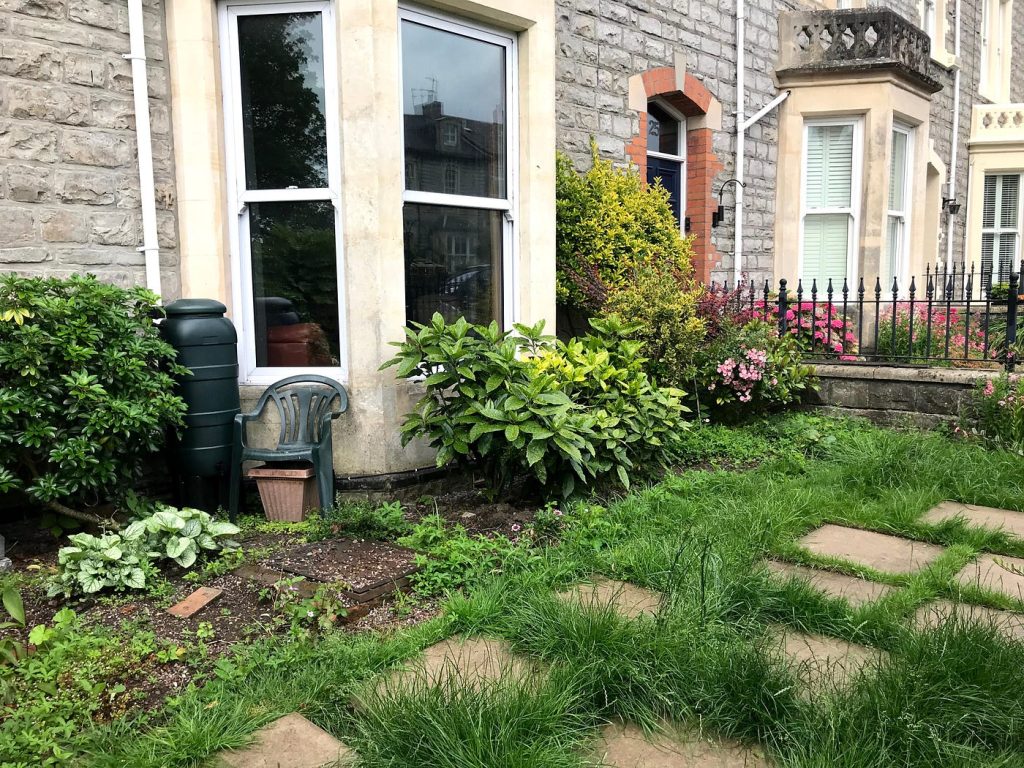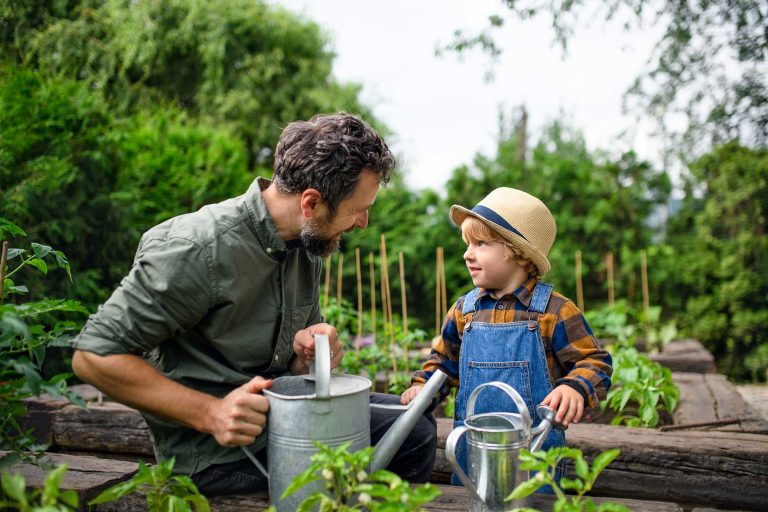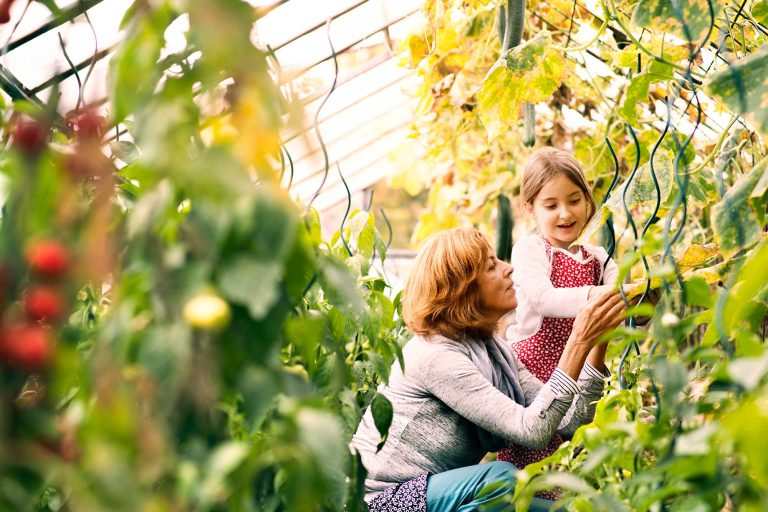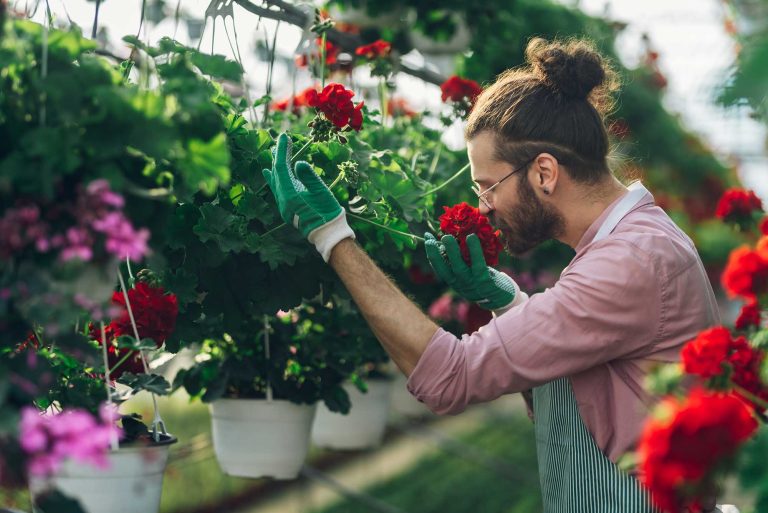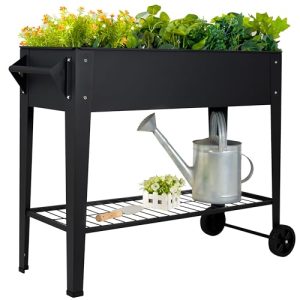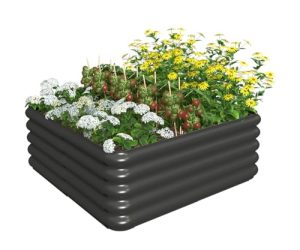Transforming the front garden of your terraced house into a captivating space doesn’t just enhance curb appeal—it creates a welcoming atmosphere that reflects your personality. Imagine walking up to your home and feeling a sense of pride as you admire the blooms, greenery, and unique design elements that greet you.
Designing your front garden is an opportunity to express creativity and improve your home’s appearance. But where do you start? With so many options and styles, it’s easy to feel overwhelmed. That’s where this guide comes in. We’ll break down the process into simple steps, ensuring you can create a stunning garden that not only impresses passersby but also provides you with a slice of nature to enjoy every day.
Ready to turn your garden dreams into reality? Let’s dig in!

Credit: www.youtube.com
Choosing The Right Plants
Selecting plants that match the climate and soil is crucial for a front garden of a terraced house. Consider low-maintenance options that thrive in limited space and complement the home’s architecture. Native species often require less care and offer year-round beauty.
Choosing the right plants for your front garden sets the foundation for a stunning landscape. The right mix can enhance curb appeal and create a welcoming atmosphere. Consider plant size, color, and maintenance needs. This ensures your garden remains vibrant and manageable throughout the year.
Native Vs Exotic Species
Native plants thrive in local climates, offering easy care and resilience. They often need less water and are resistant to local pests. Common native choices include wildflowers and ferns. Exotic species bring unique textures and colors. They can create a distinctive look but may require more attention. Research their compatibility with your soil and climate.
Seasonal Blooms
Seasonal blooms ensure your garden has color year-round. Spring brings tulips and daffodils, creating vibrant displays. Summer showcases roses and sunflowers, adding warmth and brightness. Autumn is perfect for chrysanthemums and asters. They provide rich tones as the season changes. Winter doesn’t mean a dull garden; evergreens and holly offer life and color.
Maximizing Space
Transform your terraced house front garden into a welcoming oasis. Choose vertical plants and compact shrubs to maximize space. Add stepping stones or gravel pathways for easy navigation and visual appeal.
Maximizing Space Designing a front garden for a terraced house can be a delightful challenge, especially when space is at a premium. The key is to think vertically and creatively, using every inch wisely. Whether you’re a gardening novice or a seasoned green thumb, you’ll find that maximizing space doesn’t just make your garden look beautiful—it also makes it more functional and enjoyable.
Vertical Planting
One effective way to make the most of limited space is through vertical planting. By growing plants upwards, you free up ground space and add layers to your garden. Consider installing a trellis or vertical garden wall where climbing plants such as ivy, jasmine, or even strawberries can thrive. Hanging baskets are another great option. You can fill them with cascading flowers or herbs like mint and basil. They add color and fragrance without taking up ground space. Think about using your home’s walls or fences. Attaching planters or pocket gardens can transform a bare wall into a lush, green canvas. This approach not only maximizes space but also adds an eye-catching vertical element to your garden.
Container Gardening
Container gardening is a versatile way to add greenery to your front garden without committing to permanent changes. It offers flexibility, allowing you to move plants around as needed to catch more sun or create new visual effects. Choose pots of varying sizes and materials to create depth and interest. Group them together to form a mini oasis or line them along paths for a structured look. Experiment with different plant types in your containers. Mix and match flowering plants with foliage varieties to create a rich tapestry of colors and textures. Consider seasonal plants so your garden evolves throughout the year. Containers are also perfect for edible gardens. Grow vegetables like tomatoes and peppers or herbs like rosemary and thyme right at your doorstep. This not only saves space but also makes fresh ingredients easily accessible for cooking. Do you have any creative ideas for making the most of small garden spaces? Share them and inspire others to transform their gardens!
Creating A Focal Point
Designing a front garden for a terraced house involves creating a focal point to draw attention. Use eye-catching plants or a unique sculpture to enhance visual interest. This simple element can transform your garden into a welcoming space.
Creating a focal point in your front garden can transform a simple outdoor space into a breathtaking display. It draws attention and guides the eyes, inviting visitors to explore the beauty of your garden. Whether you’re aiming for a serene ambiance or a vibrant showcase, choosing the right focal point can make all the difference. Let’s dive into some ideas that can help you create a striking focal point.
Using Statues Or Water Features
Adding statues or water features can instantly elevate the charm of your garden. Imagine a graceful statue nestled among lush greenery, offering an artistic flair to your outdoor space. Statues can be classical or modern, depending on your taste. Water features, like a small fountain or pond, provide movement and soothing sounds that enhance tranquility. Picture the gentle trickling of water on a sunny afternoon—a perfect setting for relaxation. Consider the size and style of your garden when selecting these elements to ensure they complement the overall design.
Highlighting Unique Plants
Unique plants can serve as captivating focal points, showcasing nature’s artistry. Think of a vibrant Japanese maple with its fiery leaves or a tall ornamental grass swaying gently in the breeze. These plants can stand alone or be paired with contrasting foliage to create visual interest. You can also opt for unusual plant shapes or textures that catch the eye. Succulents or exotic flowers can add a splash of color and intrigue. When choosing plants, consider their maintenance needs and how they fit into your garden’s climate. Which plant will you choose to be the star of your garden?
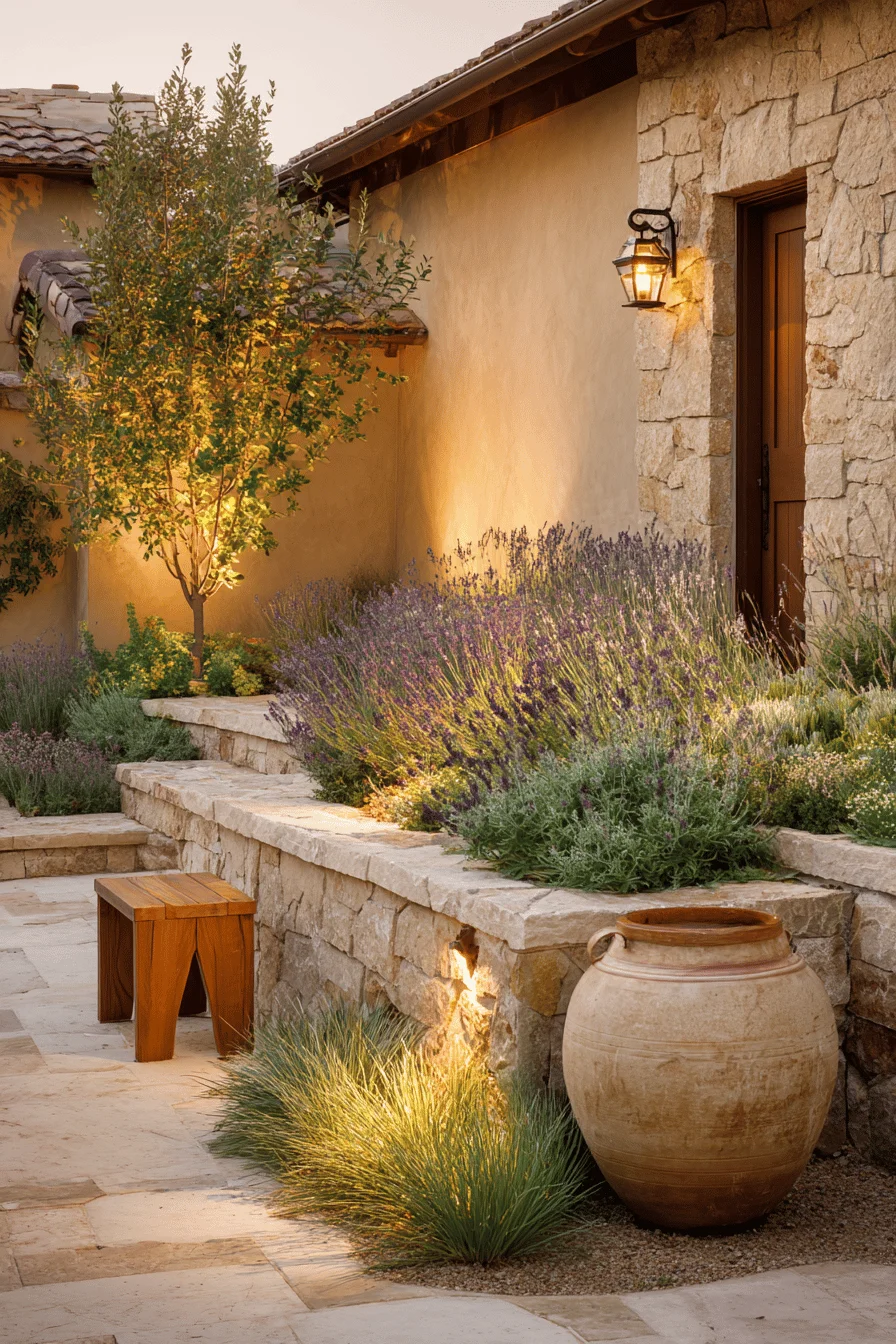
Credit: edwardgeorgelondon.com
Balancing Hardscape And Softscape
Designing a front garden of a terraced house involves balancing hardscape and softscape elements. Choose paths and patios for structure, while flowers and shrubs add color and life. Mix textures and heights to create depth and interest.
Balancing hardscape and softscape in your front garden design is crucial for creating a harmonious and functional outdoor space. Hardscape elements like pathways and patios provide structure, while softscape components such as plants and flowers add life and color. Striking the right balance ensures your garden is not only aesthetically pleasing but also practical for everyday use.
Pathways And Patios
Consider the flow of movement in your garden by planning pathways that lead naturally to your front door and around the space. Use materials like stone or brick for durability and style. A well-placed patio can serve as a welcoming spot for guests or a peaceful retreat for you. Think about the size and placement that will best serve your needs while complementing the garden’s overall look. Evaluate how these hard elements integrate with the rest of your garden. Are they too dominant or do they enhance the space? Adjust as needed for balance.
Integrating Greenery
Adding greenery softens the hard lines of pathways and patios, creating a more inviting garden. Select plants that thrive in your climate and suit the character of your home. Mixing different textures and heights can add depth and interest. Consider shrubs, flowers, and even vertical gardens to maximize space and variety. Ask yourself, does your garden feel alive and vibrant with the current plant selection? If not, experiment with new species or arrangements to achieve the desired effect.
Enhancing Privacy
Designing a front garden for privacy involves strategic plant placement and fencing. Use tall shrubs or hedges to create natural barriers. Install trellises with climbing plants for extra coverage.
Enhancing privacy in your front garden can create a peaceful retreat. It transforms your space into a sanctuary from the bustling street. Thoughtful design choices make a big difference. Let’s explore some effective ways to enhance privacy in your terraced house garden.
Hedges And Fencing
Hedges are a natural choice for privacy. They offer a green, lush barrier. Choose evergreen varieties for year-round coverage. Boxwood and yew are popular options. They are dense and easy to maintain. Fencing is another solid option. It provides instant privacy. Wooden fences blend well with greenery. Paint them in earthy tones for a natural look. Add trellis tops for extra height and style. This can also support climbing plants.
Screening With Plants
Use tall plants for effective screening. Bamboo is a fast-growing choice. It adds a modern touch to gardens. Place them in planters to control growth. Consider ornamental grasses for a softer screen. They sway with the breeze, adding movement. Pampas grass and miscanthus are great picks. Climbing plants on trellises work wonders. Clematis and ivy cover spaces beautifully. They also add color and texture to your fence. These natural elements enhance privacy in a charming way.
Incorporating Lighting
Incorporating lighting in a terraced house’s front garden enhances safety and charm. Soft lights highlight pathways and plant features, creating a welcoming atmosphere.
Incorporating lighting into your front garden can transform your space from ordinary to extraordinary. Well-placed lights can highlight your garden’s best features, improve safety, and create a welcoming atmosphere. Whether you’re looking for eco-friendly options or seeking to add dramatic accents, lighting can help you achieve your vision.
Solar Options
Solar lights are a fantastic choice for your garden. They are cost-effective and environmentally friendly. Imagine the ease of installation without the hassle of wiring, plus the added benefit of free energy from the sun. You can find solar lights in various styles, from classic lanterns to sleek modern designs. Position them along pathways or around flower beds to illuminate your garden naturally. What’s more, solar lights generally require minimal maintenance. Just ensure they receive adequate sunlight during the day to shine brightly at night.
Accent Lighting
Accent lighting is all about highlighting the special features of your garden. Do you have a beautiful tree or an ornamental sculpture? Use spotlights to draw attention to these focal points. Consider using LED lights for their energy efficiency and longevity. You can position them strategically to create shadows and depth, adding a touch of drama to your garden. Think about the mood you want to set. Warm lights can create a cozy ambiance, while cooler tones can offer a more modern feel. What atmosphere do you want your garden to evoke as you or your guests approach your home?
Maintaining Your Garden
Designing a front garden for a terraced house involves balancing aesthetics with functionality. Choose low-maintenance plants to ensure easy upkeep. Incorporate paths and seating areas to enhance accessibility and relaxation.
Maintaining your garden is the secret to keeping your front garden looking its best all year round. A well-maintained garden not only enhances your home’s curb appeal but also creates a welcoming atmosphere. Let’s explore some key aspects of garden maintenance that will help you achieve this.
Regular Pruning
Regular pruning is essential for promoting healthy plant growth and keeping your garden tidy. By trimming back overgrown branches, you encourage plants to produce new shoots and blossoms. This simple task can transform a cluttered space into a beautifully organized garden. Consider scheduling pruning sessions every few weeks, depending on the growth rate of your plants. For instance, if you notice your roses or hedges getting out of hand, it’s time for a trim. Remember, a little effort can go a long way in maintaining the aesthetics of your garden.
Seasonal Care
Seasonal care is crucial for adapting your garden to changing weather conditions. As the seasons shift, so do the needs of your plants. For example, during autumn, it’s wise to clear fallen leaves to prevent disease and pests. In spring, consider enriching the soil with compost to give your plants a nutrient boost. This small step can make a significant difference in plant health and flower production. Are you ready to meet the seasonal needs of your garden? Embrace the changes each season brings and watch your garden thrive. Maintaining your front garden may seem like a daunting task, but with regular attention, it can become a rewarding routine. Why not make it a family activity? You might find joy in watching your garden flourish under your care.
Sustainable Practices
Design a sustainable front garden by choosing native plants that require less water. Incorporate permeable paths to reduce runoff. Composting garden waste enriches the soil naturally.
Designing a front garden for a terraced house with sustainability in mind not only enhances the beauty of your home but also contributes positively to the environment. Embracing sustainable practices can transform your garden into a haven of eco-friendly beauty. Plus, it can save you time and money in the long run.
Water Conservation
Efficient water use is crucial in any sustainable garden design. Start by installing a rainwater harvesting system. These systems collect and store rainwater, which can be used to water your plants during dry spells. Drip irrigation is another effective method. It delivers water directly to the plant roots, reducing waste. Consider using drought-tolerant plants that require less water and thrive in your local climate. Mulching can also help conserve water. A layer of mulch keeps the soil moist and reduces evaporation. It’s a simple step that makes a big difference.
Using Organic Products
Embrace organic products to maintain a healthy garden ecosystem. Instead of chemical fertilizers, use compost to enrich your soil. Composting not only recycles kitchen waste but also improves soil health. Organic pest control methods are a sustainable choice. Encourage beneficial insects like ladybugs that naturally keep pests at bay. Planting companion plants can also deter harmful insects. Choose organic seeds and plants. This ensures your garden is free from harmful chemicals right from the start. It’s a small change that contributes to a healthier environment. Have you considered how your gardening practices impact the planet? Making these sustainable choices can lead to a thriving garden that’s kind to both you and the Earth.
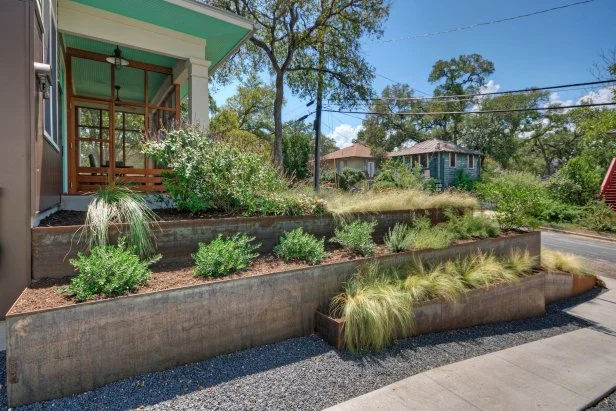
Credit: www.hgtv.com
Frequently Asked Questions
What Plants Are Best For Terraced Front Gardens?
Choose hardy plants like lavender, rosemary, and boxwood for low maintenance and beauty. They thrive in varied conditions and add color and texture. Consider incorporating seasonal flowers for year-round appeal. These plants offer structure and can enhance the aesthetic of a terraced house garden.
How Do I Plan Garden Layout For Terraced Houses?
Start with a simple sketch to visualize pathways, plant beds, and focal points. Consider symmetry and balance for a cohesive look. Use versatile elements like pots and gravel for flexibility. Keep accessibility in mind to maintain ease of movement and gardening.
What Materials Suit Terraced Front Garden Pathways?
Opt for durable materials like gravel, stone, or brick for pathways. They provide a classic look and are cost-effective. These materials require minimal maintenance and can withstand various weather conditions. Choose materials that complement the overall design of your garden.
How To Improve Privacy In Terraced Front Gardens?
Use hedges or tall plants like bamboo to create privacy screens. Install trellises or fences for additional coverage. Incorporate vertical garden elements for more greenery and privacy. These options help create a secluded and intimate space in your front garden.
Conclusion
Creating a front garden for a terraced house is rewarding. It enhances curb appeal and offers a personal oasis. Start with a simple design plan. Choose plants that suit your climate and space. Add elements like pathways or small seating areas.
Balance beauty with practicality. Keep maintenance needs in mind. Small touches can make a big difference. A well-designed garden welcomes guests warmly. It also adds value to your home. Enjoy the process and watch your garden flourish. Let your front garden reflect your style and personality.
